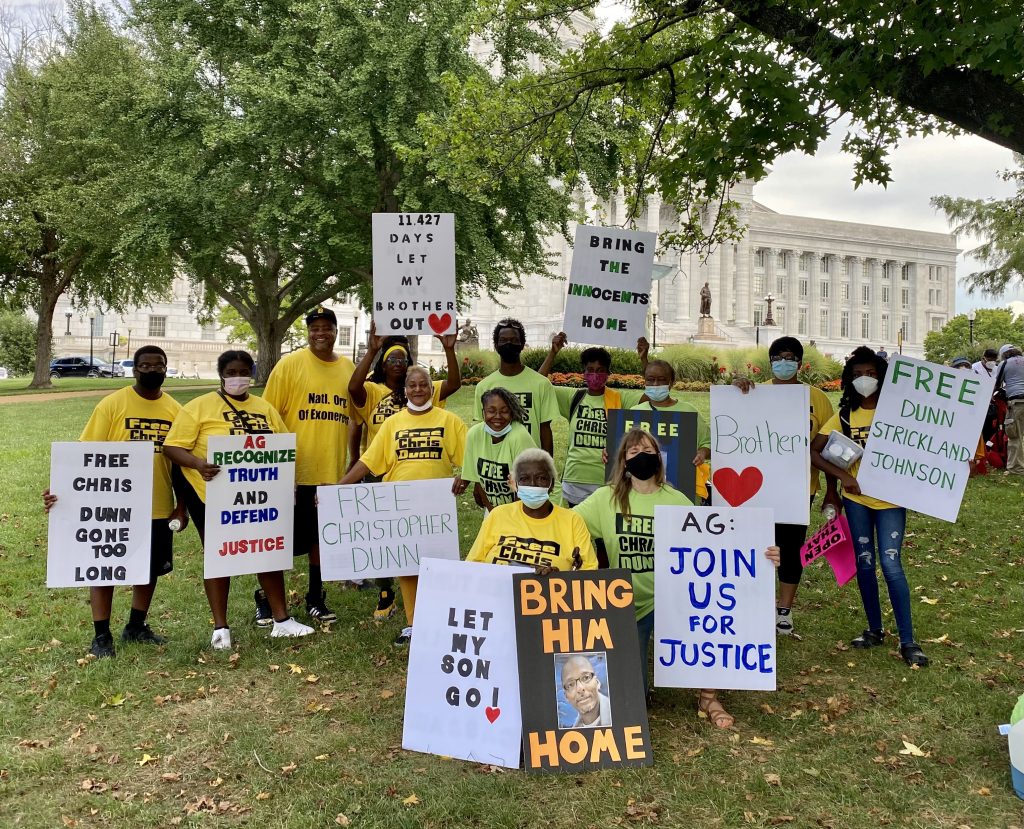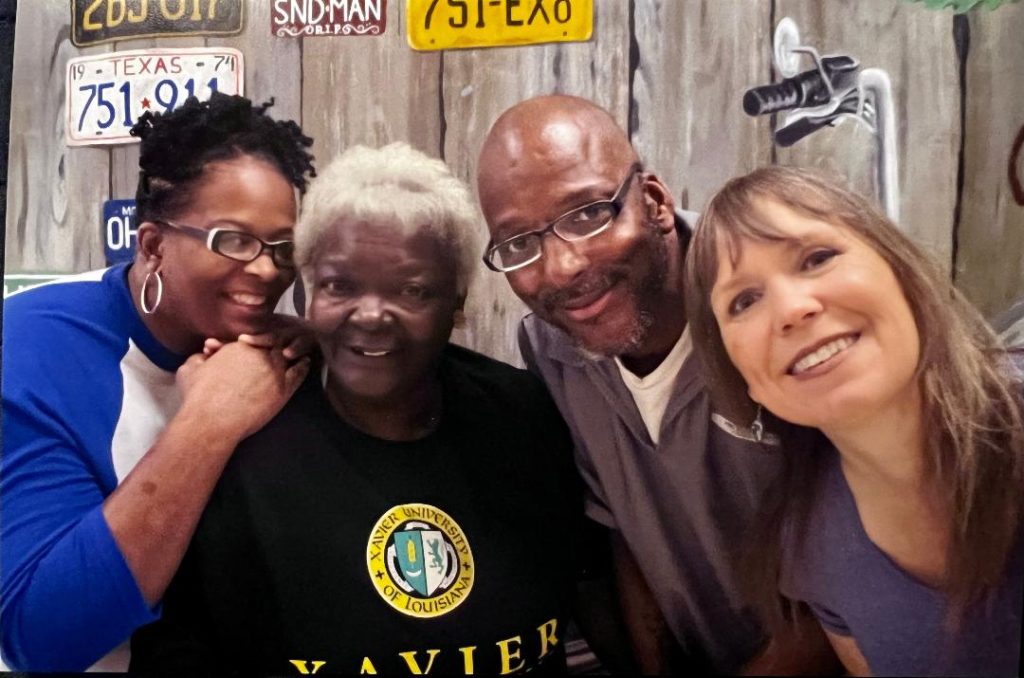
11 Nov Christopher Dunn Series Part III: The Presumption of Innocence
If you’ve been following this series, you already know that a jury found Christopher Dunn guilty of murdering Rico Rogers and shooting at DeMorris Stepp and Michael Davis on July 18, 1991. It didn’t take the jury very long to reach that life-in-prison-plus-90-years verdict. In just 42 minutes—starting at 11:05 a.m. and getting out of there just before lunch time at 11:47 a.m.—a St. Louis jury put Mr. Dunn behind bars for the rest of his life, concluding that the prosecution had overcame the presumption of innocence afforded to Christopher Dunn and proved his guilt beyond a reasonable doubt.
It’s been more than 30 years since the jury reached that verdict. And I don’t think it’s controversial to say that, 30 years later, most of the world is no longer convinced of Christopher Dunn’s guilt beyond a reasonable doubt. You don’t have to take my word for it. Just read what Missouri Circuit Court Judge William Hickle, the last judge to weigh in on Mr. Dunn’s case, said about Christopher Dunn’s guilt: “This Court does not believe that any jury would now convict Christopher Dunn.”
As Christopher Dunn and his loved ones are learning the hard way, though, this is how the presumption of innocence works in the United States. The presumption of innocence in this country doesn’t consider whether someone is actually guilty or innocent. Instead, the presumption of innocence simply asks whether the prosecution can convince a group of people of someone’s guilt at a single moment in time. What happens before that moment and what happens after that moment don’t matter—only that moment matters. For Christopher Dunn, that moment lasted only 42 minutes.
We’re groomed to revere the presumption of innocence as a uniquely American ideal.
When I search the phrase “presumption of innocence” on Google, I get more than 8.1 million results. For some reason, the first result I see is a pattern jury instruction from the U.S. District Court for the District of Massachusetts: “It is a cardinal principle of our system of justice that every person accused of a crime is presumed to be innocent unless and until his or her guilt is established beyond a reasonable doubt. The presumption is not a mere formality. It is a matter of the most important substance.”
If I scroll down a little further, I can find an article Maedot Teka did for LawInfo last year. It describes the presumption of innocence in a similar way. “The presumption of innocence — or being ‘innocent until proven guilty’ — is widely known and considered one of your basic rights if you’re ever accused of a crime,” Teka’s article says before diving into the surprisingly complicated question of whether the U.S. Constitution actually protects the presumption of innocence and the “beyond a reasonable doubt” standard.
And if I click to the second page of search results, I find myself on the website of Matthew D. Sharp, a Houston-area attorney who appears to represent people charged with driving-while-intoxicated and other criminal offenses. “The presumption of innocence is among the most sacred principles in the American court system,” the website says. “The concept of being innocent until proven guilty means that anybody accused of a crime is assumed innocent until the allegations leveled against them are proven.”

For being “one of your basic rights,” the presumption of innocence doesn’t last very long.
What’s interesting about these websites is that readers come away with the impression that the presumption of innocence is a significant part of our country’s justice system. When you read that it’s “considered one of your basic rights if you’re ever accused of a crime” or that it is “among the most sacred principles in the American court system,” you may think of it as an integral part of our country and our justice system, “not,” as the jury instruction says, “a mere formality.”
In reality, the presumption of innocence is different. To be convicted of a crime, you don’t have to be guilty beyond a reasonable doubt. Instead, prosecutors need only be able to convince a judge or a jury of your guilt beyond a reasonable doubt at one moment in time. As long as the judge or jury thinks you’re guilty in that single moment, your presumption of innocence is gone. And, more importantly, you never get it back.
For Christopher Dunn, that moment lasted only 42 minutes. For the next three decades, of course, what the jury considered in that brief moment has significantly unraveled. DeMorris Stepp, then a young teenager, said Christopher Dunn was the shooter. Now an adult, he says that he actually “didn’t see anyone” before he “heard more shots and ran” on May 19, 1990.
Michael Davis, another young teenager back then, also said Mr. Dunn was the shooter. Now an adult, he says that there was no way he could have identified the shooter on May 19, 1990. “From my vantage point at the time the shots were fired, I could not see or identify the shooter,” he has since said. “I could not even say where the shooter was or where the shots came from.”

No evidence connects Christopher Dunn to the shooting on May 19, 1990. It doesn’t matter.
Christopher Dunn proved that he’s not guilty beyond a reasonable doubt. A judge literally ruled that no jury would convict him. But, as Chris Pomorski put it in this piece that I quoted in the introduction for this series, for Mr. Dunn, “[i]nnocence alone” “[i]sn’t enough.” That’s because of a 2016 case called Lincoln v. Cassady.
In Lincoln v. Cassady, the Missouri Court of Appeals recognized that “a freestanding claim of actual innocence in cases where the death penalty has been imposed because the prospect of executing an innocent person, in the face of clear and convincing evidence of innocence, is a manifest injustice.” But, the Lincoln Court continued, in cases where the death penalty has not been imposed, clear and convincing evidence of actual innocence is not enough to warrant relief. As long as you received “a constitutionally adequate trial,” “new evidence of actual innocence” isn’t enough.
The decision in Lincoln v. Cassady is based on the Missouri Supreme Court’s decision in a case called Amrine v. Roper. There, Missouri’s Supreme Court set aside a man’s conviction. Why? All the witnesses who testified against him recanted their testimony.
If you think that sounds like what happened to Christopher Dunn, that’s because it is. The cases are practically identical. But Joseph Amrine was released. Christopher Dunn probably won’t be. The difference? Mr. Amrine was sentenced to death. Mr. Dunn wasn’t. Had Mr. Dunn been sentenced to death (not life plus 90 years), he may have been freed years ago. But, by “sparing” his life, the U.S. justice system took it away.
This is the final part of our three-article series. To read the other articles, visit the Interrogating Justice homepage or click here. To support Christopher Dunn’s fight for justice, visit the Justice for Christopher Dunn website.

